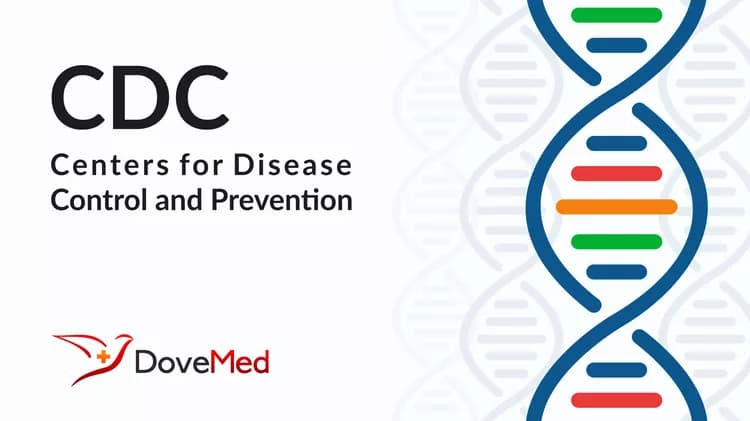
More Than 100 Million Doses Of Influenza Vaccine Expected To Be Available This Year
More than 100 Million Doses of Influenza Vaccine Expected To Be Available This Year
Almost all providers should have some vaccine in October
The Centers for Disease Control and Prevention (CDC) announced today that influenza (flu) vaccine manufacturers are expecting to produce and distribute more than 100 million doses of influenza vaccines in the United States between now and early January, 2007. Manufacturers have already begun to ship this season’s influenza vaccine, with almost of all of the vaccine expected to be shipped and distributed in October and November. The influenza vaccine manufacturers and major distributors are implementing policies designed to provide some influenza vaccine by the end of October to all providers who ordered it.
“As we’ve learned in the past few years, there is always some uncertainty regarding influenza vaccine supplies and distribution,” said Dr. Julie Gerberding, CDC director. “It’s often very difficult to predict how much vaccine will be distributed and when, or exactly when influenza vaccine will be available for those who provide it. However, if the manufacturers’ estimates hold, more people than ever before will be able to protect themselves and their loved ones from influenza this year.”
Influenza vaccine manufacturers report that they expect to produce more than 100 million doses of influenza vaccine for the U.S. market this year. This is at least 17 million more doses of influenza vaccine than has ever been distributed in the past (previous high was 83.1 million doses in 2003) and about 19 million more doses than were distributed last year (81.2 million). According to the information from manufacturers, about 75 million doses will be distributed by the end of October; that would be about 15 million more doses than were distributed by the end of October, 2005.
“As our recommendations highlight, there are many people who can benefit from the protection an influenza vaccine can provide, especially health care providers, children between 6 months and up to 5 years of age, people with chronic diseases such as diabetes, asthma, and heart disease, and people 50 years old and older” said Gerberding. “Our goal, and the goal of those who provide influenza vaccine, is to use every available dose so that we protect as many people as possible.”
According to Dr. Lance Rodewald, director of CDC’s Immunization Services Division, the CDC has been working with influenza vaccine manufacturers and distributors to monitor this season’s influenza vaccine supply and the timing of its distribution. In addition, the Food and Drug Administration (FDA) has successfully worked with the vaccine manufacturers to increase both the supply and its diversity and to facilitate early availability.
“When and how much vaccine each healthcare provider or clinic receives depends on who they ordered from and when they ordered,” said Rodewald. “There are many manufacturers and distributors, each of which has different distribution plans and schedules. We expect that some healthcare providers and clinics may get or have more influenza vaccine than others in the first month or so, but people will have plenty of opportunities to be vaccinated during October and November, as well as December or later.”
While the best time for vaccination is October and November before the influenza season typically begins, vaccination can still provide protection in December and later because during most years influenza does not peak until February or later. Since influenza is unpredictable, and different types and strains of influenza circulate throughout the flu season, the CDC’s Advisory Committee on Immunization Practices (ACIP) recommends that influenza vaccine be offered throughout the influenza season-- even after influenza has appeared or begun appearing in a community.
Each year in the United States, between 5 and 20 percent of the population is infected with influenza, about 36,000 people die and more than 200,000 people are hospitalized because of influenza complications.
Because influenza viruses are continuously changing, the strains of influenza virus included in the influenza vaccine are re-evaluated each year and a new vaccine must be formulated for each season. The vaccine includes three viruses, usually one influenza type B virus and two influenza type A virus strains, and each must be grown individually before the three are combined late in the production process. The strains are usually chosen in February and the vaccine production and preparation process takes about six to eight months. Distribution of influenza vaccine begins as early as August and typically continues throughout November and December.
The viruses in the 2006-07 influenza vaccine are:
an A/New Caledonia/20/99 (H1N1)-like virus;
an A/Wisconsin/67/2005 (H3N2)-like virus (A/Wisconsin/67/2005 and A/Hiroshima/52/2005 strains);
a B/Malaysia/2506/2004-like virus (B/Malaysia/2506/2004 and B/Ohio/1/2005 strains)
For more information about influenza and influenza vaccine visit www.cdc.gov/flu
###
DEPARTMENT OF HEALTH AND HUMAN SERVICES
Related Articles
Test Your Knowledge
Asked by users
Related Centers
Related Specialties
Related Physicians
Related Procedures
Related Resources
Join DoveHubs
and connect with fellow professionals

0 Comments
Please log in to post a comment.